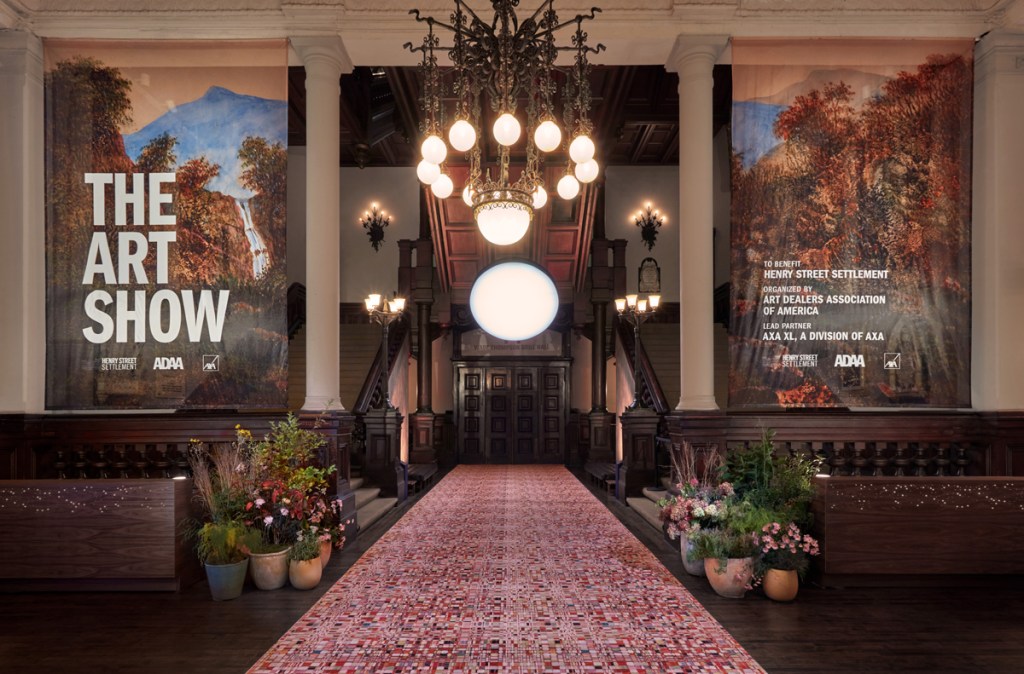To receive Morning Links in your inbox every weekday, sign up for our Breakfast with ARTnews newsletter.
The Headlines
ART MARKET’S ILL HEALTH. Sotheby’s Upper East Side HQ, long a cornerstone of the global art market, faces an unexpected challenge rooted in federal healthcare budget cuts, Crains New York reports. The auction house’s property at 1334 York Avenue may feel the added effects of setbacks suffered by its new tenant, Weill Cornell Medicine . Two years ago, Sotheby’s leased much of its longtime 10-story, 500,000-square-foot building to Weill Cornell, which planned to open a major research center there. However, these plans are now on ice due to the freezing of approximately $1 billion in federal grants and funding, primarily from the National Institutes of Health. Weill Cornell, which received over $300 million from NIH in 2024, is now projected to receive only $130 million this year. Facing potential layoffs and spending cuts, the institution has yet to complete construction on the research center, S&P Global reported. Though Sotheby’s moved to the Breuer Building on Madison Avenue—a former Whitney Museum space purchased for $100 million—it remains tied to the York Avenue property’s future. S&P estimates the building has lost nearly half its value since 2020, now worth $443 million. Despite Weill Cornell maintaining a 30-year lease and paying rent, the long-term outlook remains murky. With global art sales also down, S&P rated Sotheby’s financial health as weak, assigning it a speculative B- credit rating.
Related Articles

CULTURAL SMACKDOWN. Italy’s culture minister Alessandro Giuli has demanded Italian historian and political commentator Ernesto Galli della Loggia resign from his role on the Council of National Committees for criticizing the government’s cultural policies. In a July 11 opinion piece for Corriere della Sera, Galli della Loggia accused the government of lacking a clear cultural vision. Without naming Giuli directly, he used public broadcaster RAI as an example of declining cultural standards. Giuli responded via Facebook, accusing Corriere of censorship for not publishing an interview with him, and shared its full text online. In it, he called Galli della Loggia a “timewaster.” Corriere defended its decision, saying the interview was “full of falsities and insults,” and claimed Giuli declined an offer to publish a bylined response. “If you criticize me you must be thrown out—this is the only contribution to the debate Giuli has made,” the editorial read. Galli della Loggia told The Art Newspaper that his role on the council is unpaid and that he intends to serve out his three-year term. However, “in what appeared to be an olive branch, on July 16, the culture ministry publicly congratulated Galli della Loggia for winning the Viareggio Rèpaci literary prize,” TAN reports. “The historian said he had written to thank the minister.” So, all’s well that ends well?
The Digest
Art Basel Miami Beach has named the 285 exhibitors that will participate in its 2025 edition, scheduled to run at the Miami Beach Convention Center from December 5-7, with preview days on December 3-4. [ARTnews]
The latest UK annual report on the export of major works of art reveals that it has been a particularly difficult year for saving expensive items. In 2024-25 only one percent (by value) of artworks with deferred export licenses were acquired by UK museums, compared with 44 percent the year before and 24 percent in 2022-23. [UK government].
Following the above, here are six items that were saved from being exported from the UK last year following temporary export bars. They include a collection of papers by scientist Alan Turing, an Iron Age coin, and a needlework piece depicting the Menai Bridge. [Museums Association]
An artwork created by Argentine and Inter Miami CF soccer player Leo Messi and digital artist Refik Anadol, titled A Goal in Life, has raised $1.87 million through an online auction at Christie’s. Proceeds will benefit multiple nonprofits, including Inter Miami CF Foundation‘s global partnership with UNICEF, which supports access to quality education programs in five countries across Latin America and the Caribbean. [Christie’s]
The Kicker
ART WORLD GRIPES. In his Artnet column, Kenny Schachter writes that, as an artist who has sold almost 700 works over the last six years, “I probably have among the most acute understandings of art values on the planet [and] what’s copiously clear in the process is that we need to reassess art’s seemingly arbitrary pricing, while factoring in the unavoidably high costs of rent, staff, and fairs. Something’s got to give—lower prices (starting with emerging artists) and fewer fairs, for starters—and fast. Valuations of art, old and recently made, are unsustainable in the short, medium, and long term.” Schachter also makes it clear that he’s not a fan of art fairs: “The Art Dealers Association of America just announced the cancellation of its New York event this year. One fewer fair this cycle is no big deal. From the tragedy that was Covid (my son Adrian and I never fully recovered our sense of smell), the one good result was that there were no—as in zero—art fairs for a year.” For some odd reason he then switches spoken word:
“Everyone’s complaining
the market’s past its top,
Art’s not going anywhere,
it’s time for them to stop
They say the kids moved on,
they’re after other stuff
A word to all the pundits:
we’ve read and heard enough…”

